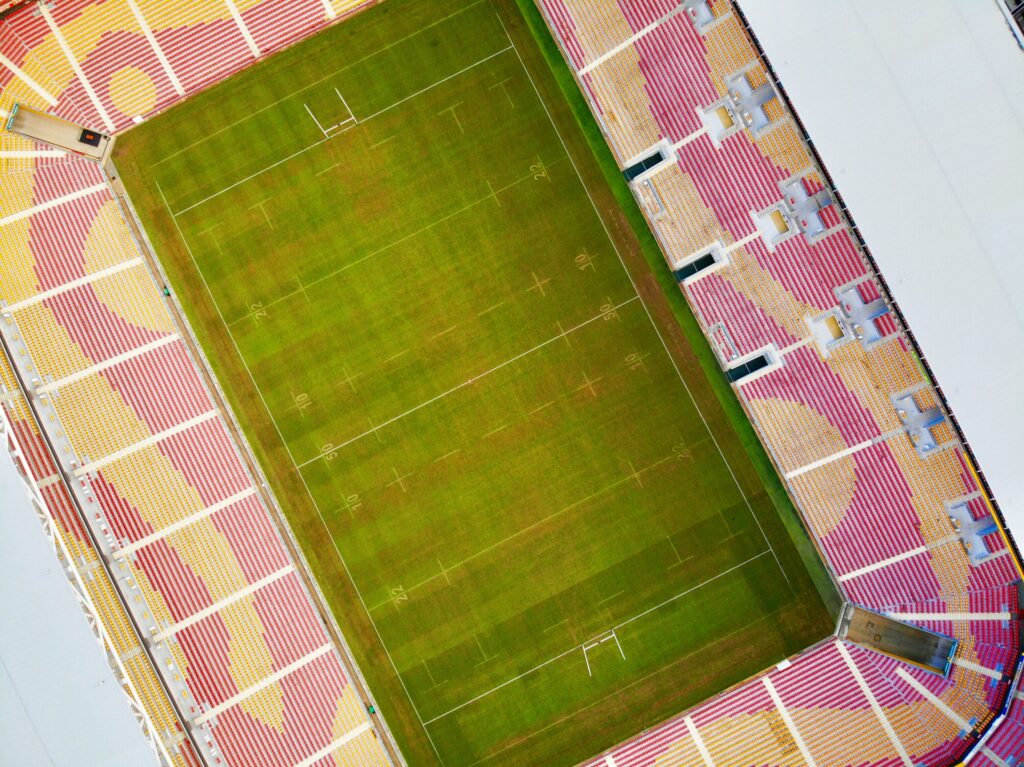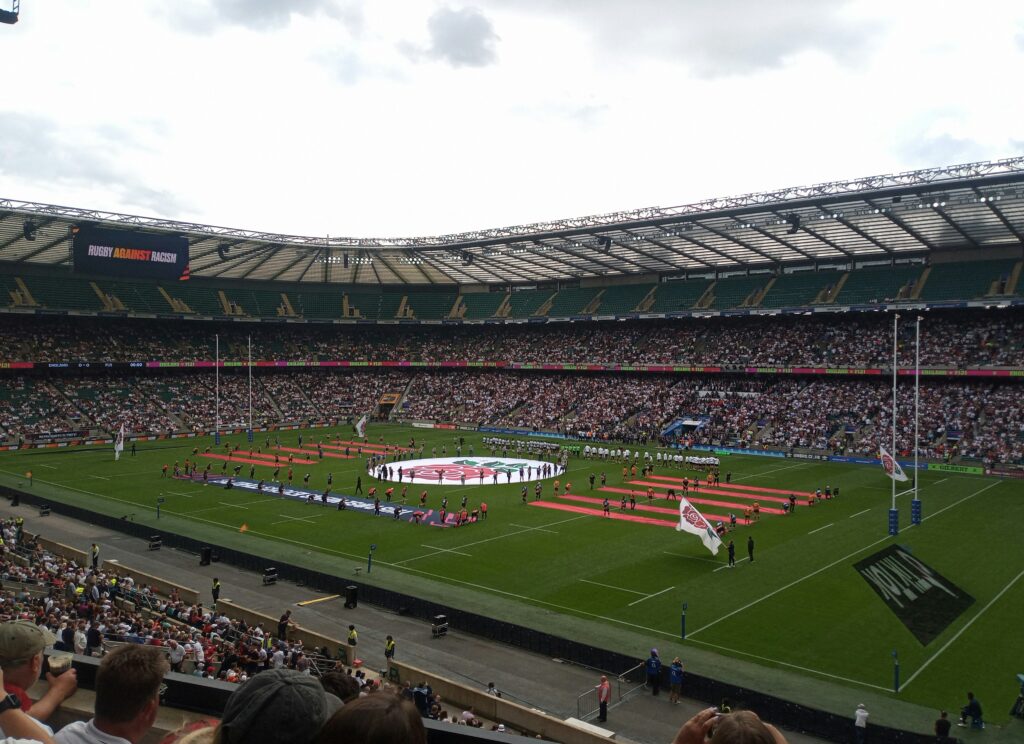Ever wondered about the size of a rugby pitch? You’re not alone.
As a rugby fan, always found it interesting how precise the measurements are that make this sport unique.
Let’s look at the rugby pitch dimensions and why they really matter.
The Basics: Standard Rugby Pitch Measurements
First, we gotta chat about the main playing area.
A standard rugby union pitch is 100 meters long from one goal line to the other. That’s kinda like a football field, but slightly different.
The width? A solid 70 meters.
But here’s where it gets interesting – those in-goal areas!
These extra spaces at each end can add up to 22 meters to the total length.
So, you’re talking about a max playing area of 144 meters long and 70 meters wide.
That’s a big patch of ground!
Key Markings: Navigating the Rugby Field
Now, let’s break down those important lines on the pitch.
You’ve got the goal lines and try lines where all the action happens. Crossing these can really make or break a game.
The halfway line divides the field in half, while the 22-meter lines are super important for kicks.
And don’t forget about the touch lines along the sides – if you step over those, you’re outta bounds!
The In-Goal Area: More Than Just Extra Space
The in-goal areas aren’t just there for looks.
These zones, usually 10-22 meters deep, are where players score a try by grounding the ball.
They’re kinda like end zones in American football, but with a rugby twist.
Size Matters: Variations in Pitch Dimensions
Here’s a fun tidbit: World Rugby lets teams have some leeway with sizes.
The minimum pitch size? It’s 94 meters long and 68 meters wide.
This flexibility helps out smaller clubs or places with space issues.
Professional vs. Amateur: Does Size Differ?
Most pro stadiums like Twickenham or Eden Park use full-size pitches.
But amateur clubs might play on smaller fields to work with what they’ve got.
Rugby vs. Other Sports: A Field Comparison
Have you noticed how different a rugby pitch looks next to a soccer field?
Rugby pitches are usually longer and wider.
Oh, and then there are differences between rugby league and union pitches!
Why Pitch Size Matters in Gameplay
The dimensions of a rugby pitch aren’t just random numbers; they matter!
They influence tactics, stamina, and even gameplay styles.
A wider field means more room for those amazing runs.
And if it’s longer? More space for those big kicks!
It’s all part of what makes rugby such an exciting sport.
So, whether you’re tuning into the Rugby World Cup or checking out a local match, remember that pitch dimensions shape the game we love so much.
Next time you’re at Twickenham or your local ground, take a moment to appreciate that carefully measured field beneath your feet.
The Evolution of Rugby Pitch Dimensions
Rugby’s playing field hasn’t always been this size! Let’s take a quick peek back in time.
In earlier days of rugby, pitch sizes were all over the place.
It wasn’t strange to see games played on fields of different sizes based on what was available.

The Rugby Football Union (RFU) standardized sizes in the late 1800s; even then, there was more leeway than what we see today.
World Rugby’s Role in Standardization
World Rugby (used to be called International Rugby Board) has been super important in making and keeping international standards for pitches.
These rules help keep things consistent across competitions and make sure the game stays fair.
The Science Behind the Size
Ever think about why rugby pitches are their specific sizes? It’s not just tradition – there’s actual science behind it!
They consider many factors:
- Player endurance
- Game flow
- Tactics
- Spectator viewability
A tiny pitch could lead to jam-packed games with less strategy; too big might tire players out trying to cover all that ground.
Rugby Pitch Markings: More Than Just Lines
Let’s dive deeper into those markings on the pitch—each line has its purpose:
The 22-Meter Line
This line is key for tactical kicking. If player kicks from behind it and it goes out, then lineout starts from where it crossed touchline.
The 10-Meter Lines
These dashed lines mark how far back members must stay during kick-offs – it’s 10 meters on either side of halfway line!
The 5-Meter Lines
These help during lineouts and scrums; they run parallel to touchlines!
International Variations: Same Game, Different Dimensions?

While World Rugby sets guidelines, some well-known stadiums have little variations:
- Twickenham Stadium (England): 125m x 70m (with in-goal areas)
- Eden Park (New Zealand): 120m x 70m (with in-goal areas)
These small differences can totally change how strategies play out and often get talked about by players and coaches alike.
The Future of Rugby Pitch Dimensions
As rugby changes over time, people argue whether pitch sizes should shift too. Some want larger ones for open plays; others think current sizes are just right.
World Rugby keeps reviewing these rules while balancing history vs new developments.
Conclusion: The Pitch Perfect Game
Understanding those rugby pitch dimensions gives you an even better appreciation for our favorite game!
From necessary lines like the 22-meter one to vital in-goal areas—every part plays its role in making rugby so special.
Next time you’re cheering for your squad at a match or catching some action during a Rugby World Cup match—take time to enjoy that beautifully crafted battlefield beneath everyone’s feet!
It’s not just any grass—it’s where all that awesome rugby magic happens!